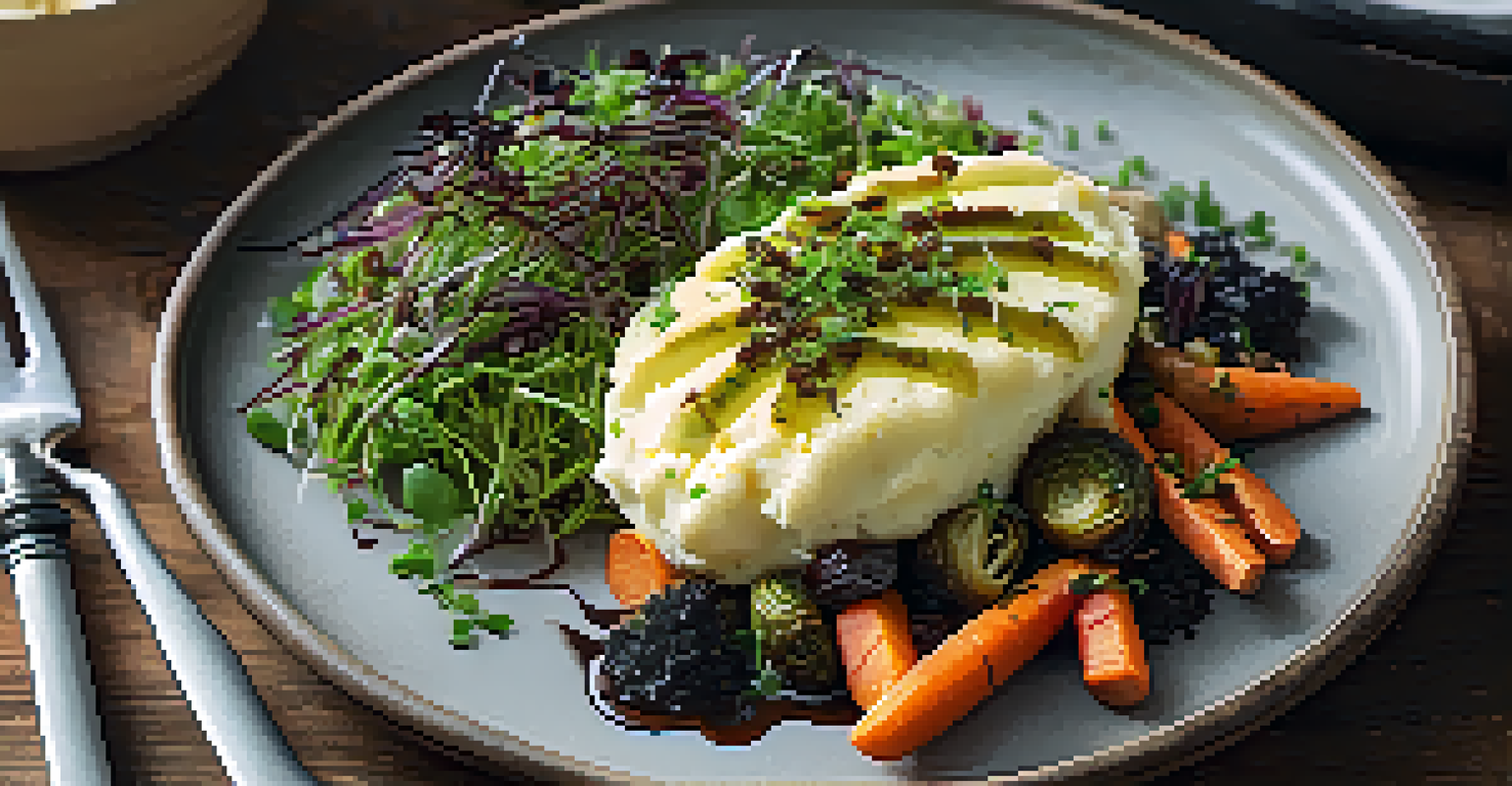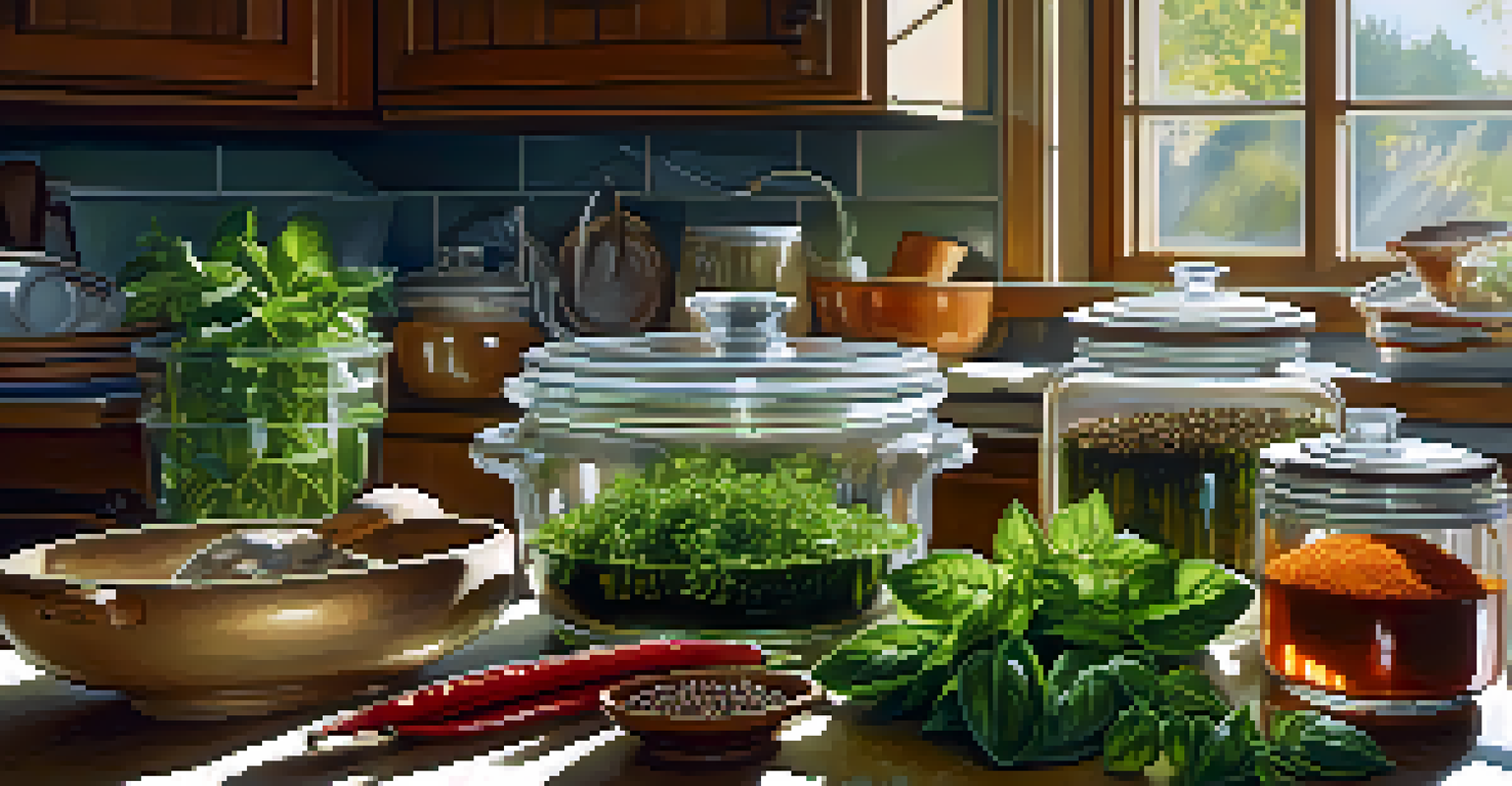How to Test and Perfect Your Vegetarian Recipes

Understanding the Basics of Vegetarian Cooking
Before diving into recipe testing, it's essential to grasp the foundations of vegetarian cooking. This means knowing the variety of plant-based ingredients available and how they can be combined to create satisfying dishes. Familiarize yourself with staples like legumes, grains, and seasonal vegetables that form the backbone of many vegetarian meals.
Cooking is like love. It should be entered into with abandon or not at all.
Vegetarian cooking isn't just about substituting meat; it's about enhancing flavors and textures. For instance, understanding how to layer spices or how different cooking methods can affect the final dish makes a significant difference. Think of it like building a house—every ingredient adds a layer that contributes to the overall structure.
Embracing these basics will set the stage for successful recipe testing. You'll approach your cooking with confidence, knowing that each ingredient plays a crucial role in the harmony of the dish.
Gathering Quality Ingredients for Testing
High-quality ingredients can make or break your vegetarian recipes. Fresh produce, whole grains, and organic spices not only taste better but also enhance the nutritional value of your dishes. When testing recipes, prioritize quality over quantity to ensure that your meals shine.

Consider visiting local farmers' markets or specialty grocery stores to source the best ingredients. This not only supports local businesses but also allows you to discover unique varieties of fruits and vegetables that you might not find in a typical supermarket. Each ingredient you choose can inspire a new twist on a classic recipe.
Mastering Vegetarian Cooking Basics
Understanding foundational plant-based ingredients and cooking techniques is crucial for creating delicious vegetarian dishes.
Remember, the freshness of your ingredients can directly impact the outcome of your dish. By investing time in selecting quality items, you'll set yourself up for success in perfecting your vegetarian creations.
Starting with Simple Recipes for Testing
When testing vegetarian recipes, it's wise to start simple. Choose recipes that don’t require an extensive list of ingredients or complicated techniques, allowing you to focus on flavor and texture. For example, a basic vegetable stir-fry can quickly become a great base for experimenting with different seasonings.
The secret of success in the kitchen is to embrace your mistakes and learn from them.
Additionally, simpler recipes give you the chance to understand the fundamental cooking processes without being overwhelmed. Once you've nailed a few straightforward dishes, you can gradually introduce more complex elements, like sauces or marinated proteins.
By mastering simpler recipes first, you're laying a solid foundation for your culinary journey. This approach helps build your confidence and skills, encouraging you to tackle more challenging recipes down the line.
Adjusting Seasoning for Flavor Perfection
Seasoning is the heart of any dish, and it’s especially crucial in vegetarian cooking, where flavors can sometimes be more subtle. As you test your recipes, take note of how different herbs and spices interact with each other and with the main ingredients. A pinch of salt or a squeeze of lemon can elevate a dish from bland to vibrant.
Don’t be afraid to experiment with different flavor profiles. For instance, if a recipe calls for basil, try swapping it with cilantro or adding a dash of smoked paprika for a new twist. Tasting as you go is a vital part of the process, allowing you to adjust and refine until you reach the desired flavor balance.
Quality Ingredients Enhance Flavor
Choosing fresh, high-quality ingredients can elevate your recipes and inspire creativity in your cooking.
Ultimately, seasoning is a personal preference, and with each test, you’ll learn what works best for your palate. This experimentation not only enhances your dishes but also makes cooking an enjoyable learning experience.
Incorporating Texture for a Well-Rounded Dish
Texture is just as important as flavor in vegetarian cooking. A dish that’s too soft or mushy can lack appeal, so aim for a variety of textures to keep your meals interesting. For example, pairing creamy mashed potatoes with crispy roasted vegetables creates a satisfying contrast.
When testing your recipes, think about how different cooking methods can add texture. Roasting brings out the sweetness in vegetables while sautéing can add a lovely caramelization. Mixing raw and cooked elements, like adding fresh greens to a warm grain salad, can also enhance the overall mouthfeel.
By focusing on texture, you'll create dishes that are not only delicious but also visually appealing and enjoyable to eat. This attention to detail can significantly elevate your vegetarian cooking.
Inviting Feedback to Improve Your Recipes
Once you've tested and refined your recipes, it’s time to invite others to taste your creations. Sharing your dishes with friends and family not only brings joy but also provides valuable feedback. Constructive criticism can help you identify what works and what might need a little tweaking.
Encourage your taste testers to be honest. Ask them what they liked, what they didn’t, and if they have suggestions for improvement. Sometimes, a fresh perspective can highlight aspects you may have overlooked, leading to even more delicious outcomes.
Feedback Fuels Culinary Growth
Inviting friends and family to taste your dishes provides valuable insights that can improve your recipes and enhance the cooking experience.
By opening your kitchen to feedback, you're fostering a collaborative cooking environment. This not only enhances your recipes but also builds a community around food, making the cooking experience more enjoyable.
Documenting Your Recipe Journey for Future Reference
As you test and perfect your vegetarian recipes, it’s essential to document your journey. Keep a journal or digital notes that detail your recipe adjustments, cooking times, and any feedback you receive. This will serve as a valuable resource for future cooking endeavors.
By recording your successes and learning moments, you create a personalized cookbook that evolves with your culinary skills. Over time, you’ll build a repertoire of tried-and-true recipes that you can rely on for quick meals or special occasions.

Documentation not only helps you remember what worked well but also allows you to track your growth as a cook. Looking back at your earlier recipes can inspire new ideas and remind you of how far you’ve come.